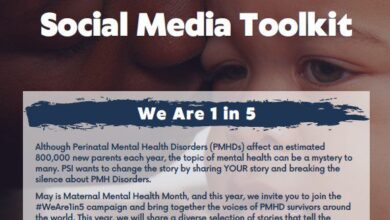Supporting Labor Doula Clients Expecting Twins

I started my career as a Labor Doula when my sister-in-law found out she was expecting twins. She was frustrated that her doctors shared different opinions about how she would deliver these babies. Some doctors say the safest option is to schedule a Cesarean at 36 weeks. Other doctors at the same practice said she could try to deliver both babies vaginally if Baby A was breech. If she decides to deliver the babies vaginally, her doctors will only allow it if she gets an epidural and gives birth in the operating room. My sister-in-law is really hoping to avoid those drugs based on past experiences. She grew increasingly frustrated with the uncertainty of labor—and with her medical team.
Many of my clients also experienced the same pressures from their providers when they were pregnant with twins. Our job as labor doulas is not to convince our clients to give birth a certain way or tell them what is “best”. Our role is to help our clients learn about their options and then help them communicate with their care team so they can make the best decision for themselves and their babies.
Premature birth
About 3.26% of births in the US are twin births. (CDC 2018) Being pregnant with twins/multiples automatically increases the risk for premature birth. In addition, high blood pressure, diabetes, smoking or drug use during pregnancy, poor diet during pregnancy, pre-eclampsia (high blood pressure accompanied by protein in the urine, restricting blood flow to the placenta), previous delivery of a preterm pregnancy, and pregnancy complications also increase the risk for preterm delivery1.
If your client gives birth to premature (preterm) babies, the babies are likely to face complications related to breathing, feeding, and growth. Babies can spend significant time in the NICU including time in an incubator or on a ventilator for breathing support. Things you can do to support your clients include:
- Provide resources for pumping breast milk and encourage your client to speak regularly with the hospital’s lactation consultant(s). Videos from Stanford’s Newborn Nursery video series can also provide practical tips for Maximizing Milk Production and what to do if moms are separated from their babies. http://med.stanford.edu/newborns/professional-education/breastfeeding.html
- Help them communicate with the NICU team to decide if Kangaroo care and/or other bonding activities are possible including talking to the babies, participating in feedings, or just being there to talk to their babies.
- Check in with your client regularly, ask how they are doing, and provide referrals for their support as needed. Having babies in the NICU can be very difficult. Many communities have NICU support groups or Facebook groups dedicated to supporting NICU families.
Female Birth of Both Babies
Is this a safe option for your client? Probably! If Baby A (the baby closest to the cervix) descends to the vertex position after 32 weeks’ gestation, the risks of complications are about the same as singleton babies.2
Trials have shown that, when the first twin has a cephalic presentation, and appropriate equipment and personnel are available, at least from 32 weeks of gestation onwards, an attempted vaginal delivery should be the default plan, regardless the presentation of the second. twins.—Dwight J Rouse, MD
If you are supporting a client who is planning to deliver both babies vaginally, this is similar to supporting a singleton labor and delivery, with a few exceptions:
- Your client may “need” to get an epidural so that the medical team can prepare for an emergency. Encourage your client to ask about their options if they do not want an epidural.
- Your client will likely labor in their hospital room but will be taken to the OR for pushing/delivery so the health team can be prepared for emergencies. Prepare your client for a bright, sterile environment in contrast to many labor rooms.
- After Baby A is born, there will likely be some “down time” before Baby B is born. Encourage your client to take slow, relaxed breaths. Encourage your client to ask to see or hold their baby if possible.
- There will be many tests by the doctor’s hands and ultrasound machines after Baby A is born. This is so that they can determine Baby B’s position. There may be some manual moving of Baby B to a heads-down position, or a breech delivery of Baby B depending on the doctor’s skill/comfort level.
- Give lots of encouragement when it’s time to push Baby B! Help your client find their “second wind”!
Planned Cesarean Birth of Both Babies
About 75% of twins born in the United States are by Cesarean birth. A look at two Twins studies shows that planned cesarean delivery is associated with higher neonatal morbidity and mortality, but only in twins born at less than 37 weeks’ gestation in the general group, and less in 35 weeks in the low-risk cohort. Preterm cesarean delivery is strongly associated with respiratory distress in term and late preterm neonates.2
If your client is having a planned Cesarean for their babies, encourage them to inquire about a Friendly or Family Centered Cesarean experience. If you are allowed to attend this birth, you will support your client that you will only perform any single baby Cesarean birth.
Combination of Vaginal Birth and Cesarean Birth
It is rare for your client to deliver their first baby vaginally and have their second by Cesarean. This only happens about 4% of the time.3 If this happens to your client, be sure to provide plenty of encouragement especially immediately after birth. Their minds and bodies have been through so much! You will likely be asked to leave during the Cesarean due to the emergency delivery and you may be asked to accompany your client back to the recovery room.
Postpartum Support
Here are some more tips for supporting your clients after the birth of their babies:
- Encourage your clients to get lactation support if they plan to breastfeed/breastfeed. It is also highly encouraged to have your clients visit a lactation consultant during their pregnancy if they are planning on breast/chest feeding their twins.
- Check in regularly with your client and provide information about Postpartum Mood and Anxiety Disorders. Your client is at increased risk for PMADs because of twins.
- Many twin parents share that they are overwhelmed with help in the first few weeks after birth. People are eager to bring food, visit the babies, and help when needed. However, after the first few weeks, parents of new twins say their support often disappears. The twins’ “newness” wears off and they are left alone and tired. You can help by setting up a meal train that covers the first few months and includes days where people can help with laundry or babysitting while the parents get a chance to sleep . Referrals to Postpartum Doulas are a great option for many families (with and without family support).
1 Multiple births and premature babies. directed. https://www.nidirect.gov.uk/articles/multiple-births-and-premature-babies. Published April 21, 2020. Accessed February 24, 2021.
2 MacReady N. Twin Births: Descending is Safer than Caesarean. Medscape. https://www.medscape.com/viewarticle/879767#vp_2. Published July 26, 2020. Accessed February 24, 2021.
3 Alexander JM, Leveno KJ, Rouse D, et al. Cesarean delivery for the second twin. Obstet Gynecol. 2008;112(4):748-752. doi:10.1097/AOG.0b013e318187ccb2
About the Author


Katie Nyberg has served hundreds of mothers, partners, and families through her role as a birth doula, postpartum doula, and childbirth educator since 2010. She believes that our society does not support new mothers enough and she has mission to help provide missing care for women during their childbearing years. Katie has been a part of CAPPA since 2015. She is excited to combine her passions for teaching and for supporting new moms through her role as a Postpartum Doula Trainer. Katie is a frequent speaker for mothers, families, and health care providers in Iowa. She has been featured in a doula magazine, Parents Magazine, and on her local television station.





